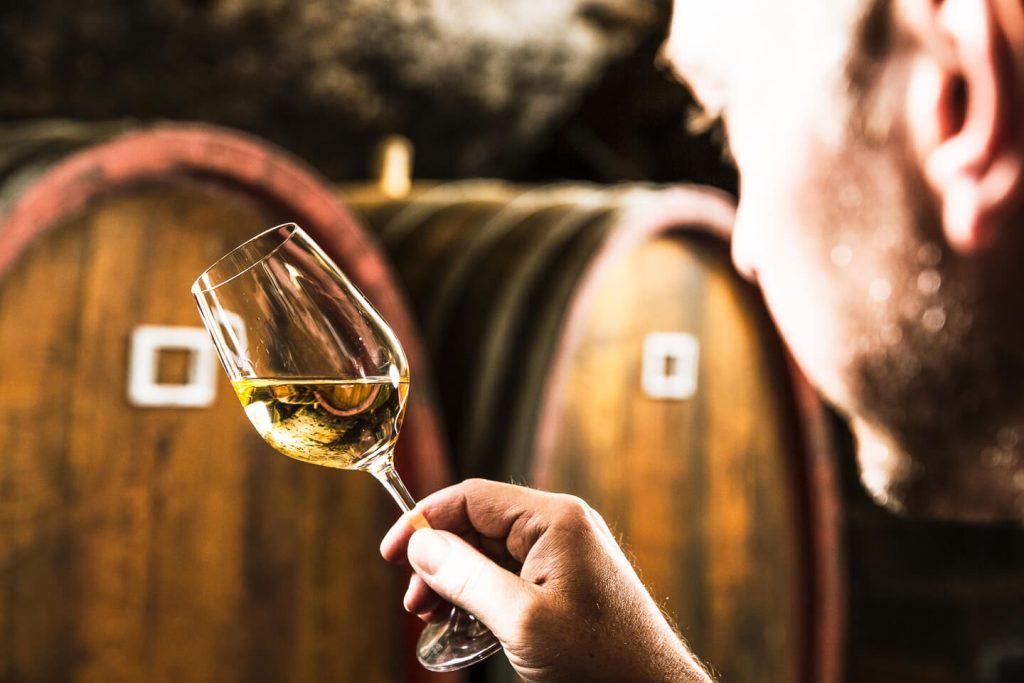For grape growers and winemakers alike, February is a month that brims with expectation. The harvest is getting closer every day, bringing with it a strong sense of anticipation and a fair degree of anxiety. Now the final decisions must be made to ensure that the grapes are picked at their absolute best. After all, our beautiful Nelson wines only come from top quality grapes.

The lead up to harvest can be quite a stressful time for growers. Although Nelson gardeners are crying out for more rain, what grapes really need is warm, settled weather with lots of sunshine — preferably with little or no rain. At this time in the season, growers rely heavily on the weather to control pests and disease. Warmer, dryer weather not only ripens the fruit, but helps to reduce disease pressure. The hotter and dryer, the better.
Crop evaluation has been ongoing throughout the season. This involves thinning fruit to increase quality and leaf plucking to assist ripening and increase airflow. But now the bird nets are starting to go on — especially on the red grapes. Those cheeky birds start to show an interest as soon as the grapes start to change colour and ripen.

For some varieties, harvesting will begin within the next couple of weeks. It will be in full swing all around the country by mid March, generally finishing towards the end of April, depending on grape variety and weather conditions. And right across New Zealand, growers are scratching their chins as they weigh up all the variables that affect the timing of their harvest.
The decision to pick is greatly influenced by weather forecasts. If wet weather is forecast in the middle of the proposed harvest time, growers need to decide whether to harvest earlier or risk leaving the fruit on for a while longer. Both have consequences for the quality and taste of the grapes, and therefore the potential quality of the wine.

As the grapes reach maturity, growers also keep a close eye on the brix, or sugar levels, as well as acid levels (pH). As the sugar levels rise, there is a corresponding fall in acid levels, resulting in an increase in the pH level. If the pH level gets too high, this could be an indication that the grapes are overripe. Most wines will have a pH reading between 3 and 4 on the pH scale. The acid levels are very important because these are what gives the wine its balance and structure.
Often the grower will have targets for grape sugar, acid, and pH levels that have been worked out in advance through careful discussion with local winemakers. In Nelson, our winemakers work in a close partnership with growers to create flavoursome wines with great character — and it all begins with the grapes. For that reason, the targets for each crop vary considerably, depending on the varietal and style of wine. The grower always has to balance the intended quality of the wine against the desire to produce as much fruit as possible.
For many parts of the South Island, it is likely that this season’s crop will be smaller this year, thanks to some unseasonably cold weather. The good news is that the quality of the Nelson crop is looking very good at this point. If the dry weather persists, 2021 could result in another very nice vintage on the back of two great years for Nelson wine.

Of course, for some wines, tricky decisions continue to be made long after they are safely in the barrel. Over the past few weeks, the Kahurangi team has been conducting barrel sampling of 2020 Chardonnay and Pinot Noir to work out the final blend for our Mt Arthur Chardonnay. This is a long and, at times, quite challenging process. Every barrel must be sampled, evaluated and scored to check that it meets our premium Mt Arthur standards.
We often re-visit barrels to make sure our selection process is robust. Then, over the course of a few days, blending trials take place to make sure we’ve got just the right combination. The barrels that don’t get the ‘100% Mt Arthur’ pass mark are used for our Kahurangi Estate Series range instead.
David Barrett reports that the team is very pleased with the high-quality Chardonnay that 2020 produced, saying: “I’m just scared we won’t have enough Mt Arthur Chardonnay since its popularity just keeps increasing.”
Late summer is a fantastic time of the year to be living in the beautiful Nelson region. If you are lucky enough to be visiting on holiday, do try to drop in for a wine tasting at one of our local vineyards. There’s something so delightful about drinking a glass of wine in the place where the grapes were grown. Winemakers just love to chat about wine, and you might even get some insider knowledge about how the 2021 vintage is looking.



